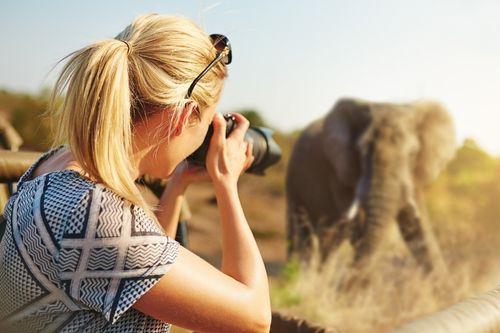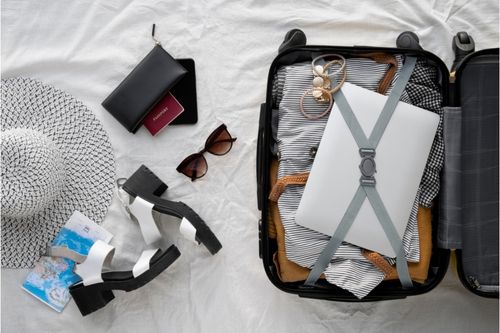Table of Contents
- Wildlife photographers life
- What is a wildlife photography?
- Work as a freelance photographer
- Start with photographing primary species
- Get ready to travel
- Conduct workshops
- Participate in the Wildlife Photographer of the Year competition
- Challenges of wildlife photography
- Wildlife photographer salary
- Key takeaways
- FAQs
Wildlife photographers life
Wildlife photography is a creative art form that focuses on documenting wildlife and the aesthetic qualities of the rapidly changing environment. Wildlife photographers are usually professionals who travel the world photographing wildlife in their natural habitats. They can also be amateurs who use their cameras to capture the beauty and diversity of nature. Read on to learn how you can become the wildlife photographer of the year.
What is a wildlife photography?

A wildlife photographer is someone who captures images of wildlife in their natural habitat. It includes All types of wild mammals, birds, insects, plants, reptiles, sea life, and other creatures. Wildlife photography encompasses various environments, including rainforests, deserts, mountain peaks, grasslands, and underwater.
Their work aims to capture wildlife’s natural beauty and behavior in their naturalistic environment. It could include static poses and dynamic action shots to demonstrate behaviors and document changes in animal habitats.
Here are the five steps that can help you achieve your goal of becoming the best wildlife photographer.
Work as a freelance photographer
Many aspiring wildlife photographers want to work for magazines such as National Geographic. However, only a few positions are available, and many are already full.
That doesn’t mean you can’t have your photography published in a well-known magazine! The vast majority of wildlife photographers work for themselves.
True, the freelancing does not guarantee a steady income. However, you can choose your clients and decide who to sell your photography to and at what price.
Start with photographing primary species
Photographing lions in Africa or tigers in Asia sounds like a fantasy. You don’t have to start so big. Especially since getting to the best wildlife photography locations can be expensive.
Begin with primary species that you can see nearby. Wander through the woods or go mountain hiking. Photograph birds, rodents, or deer. Take your time practicing before attempting to photograph more exotic animals.
Get ready to travel

Sure, you can photograph the animals in your neighborhood. However, the average wildlife photographer must travel extensively. It means missing out on time with your family and incurring additional costs.
One determines the location by the type of wildlife photography one specializes in. Seeing whales requires going to the ocean, whereas lions wait in the savannas.
Being prepared to travel also implies that you need to expose yourself to various cultures. Make an effort to become acquainted with the local culture.
You might even want to brush up on your language skills. You never know it might help you find the right wildlife location.
Conduct workshops
Aside from photography, many professional wildlife photographers provide additional services. To supplement their income, they teach wildlife photography courses or workshops.
Teaching courses can also help you improve your photography skills. Your students may ask you questions that will help you delve deeper. Or they may show you photos that will inspire you.
You could also begin organizing tours. You can teach your groups the secrets of wildlife photography in real-world settings. The more varied your profile, the better wildlife photographer you can become.
Participate in the Wildlife Photographer of the Year competition
This exhibition from the Natural History Museum in London includes over 100 exceptional images that capture captivating animal behavior, spectacular species, and the breathtaking diversity of the natural world.
When one uses photography’s unique emotive power to engage and inspire audiences, the images shed light on stories and species worldwide, encouraging a future of environmental advocacy.
Wildlife Photographer of the Year is the most prestigious photography competition in the world, providing a global platform for showcasing the natural world’s most impressive and challenging sights. They receive over 50,000 entries from all over the world for the competition.
Challenges of wildlife photography
Wildlife photographers must be prepared to travel to remote and isolated locations, often in inclement weather. They may work alone or in small groups and must be ready to capture quick action shots of ambiguous wild animals. Because animal behavior is erratic and unpredictable, professionals may only have a few seconds to observe or photograph their subjects.
Wildlife photographers must also be proficient in the use of specialized photographic equipment. They might use telephoto lenses to photograph wild animals from a distance or waterproof housings to photograph underwater. Other common wildlife photography challenges include-
- Environmental factors.
- Finding wildlife to photograph.
- Getting close to wildlife.
- Physical risks.
- Working with available light.
Wildlife photographer salary
According to ZipRecruiter, wildlife photographers earn an average annual salary of $40,676, or $19.56 per hour. It is very close to the yearly average wage of general photographers, which is $41,280, or $19.85 per hour. The highest-earning wildlife photographers earned up to $81,000 per year.
The job market for wildlife photographers varies greatly depending on location, experience, and skill level, implying that there may be opportunities for higher pay in the right circumstances. Professionals in areas where few companies are hiring for this position may see limited income and need to relocate to find better economic opportunities.
Key takeaways
- Wildlife photography is one of the unique types of photography. Professional wildlife photographers photograph wild animals in their natural habitat.
- Wildlife photographers need to be ready to travel. They must prepare for challenges like environmental factors, physical risks, and getting close to wildlife.
- The Natural History Museum in London conducts the Wildlife Photographer of the Year competition. The competition receives many photographers from around the world with breathtaking pictures.
Did you find this blog informative? Please let us know your thoughts and views in the comments below. Click here to contact us for more information on wildlife photographers. We would be happy to assist you with your queries.
Liked this blog? Read next: Basics of photojournalism
FAQs
Q1. Who won wildlife photographer of the year 2021 at the Natural History Museum?
Answer- Biologist Laurent Ballesta won the wildlife photographer of the year 2021 at the Natural History Museum.
Q2. Who is the best wildlife photographer in India?
Answer- Sudhir Shivaram, who grew up in Karnataka, is a well-known and respected wildlife photographer in India.
Q3. Who is the world’s best wildlife photographer?
Answer- According to Nature TTL, Nick Nichols is the best wildlife photographer in the world. He is a National Geographic photographer and winner of Wildlife Photographer of the Year.







